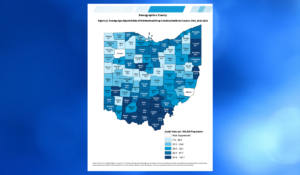Remembering Morgan’s Raid
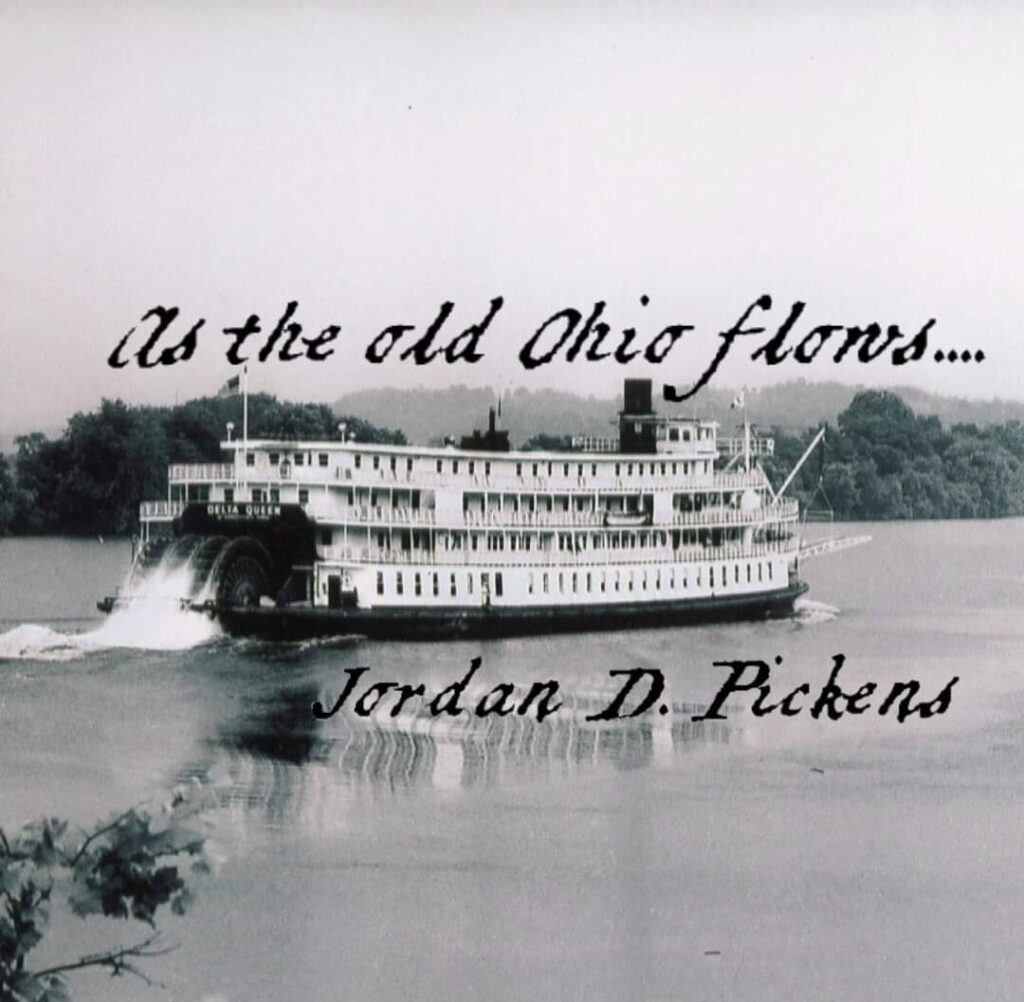

Remembering Morgan’s Raid
July 2, 1863, marked the beginning of Confederate General John Hunt Morgan’s 1,000 plus mile raid in Sparta, Tennessee. He then proceeded to cross into Kentucky, at the time was a “border state” due to still being part of the Union but permitting slavery. Confederate General Braxton Bragg, the regional commander, intended for Morgan’s cavalrymen to provide a distraction by entering Kentucky. Morgan, however, confided to some of his officers he had long desired to invade Indiana and Ohio to bring the terror of war to the North.

Bragg had given him “carte blanche,” or complete freedom to act as one wishes or thinks best,to ride throughout Tennessee and Kentucky, but ordered him to under no circumstances cross the Ohio River. Morgan nonetheless crossed the Ohio at Brandenburg, Kentucky, into Indiana and then moved across the Ohio-Indiana border at Harrison, Ohio, on July 13. From there, he circumvented Cincinnati to reach Williamsburg, Ohio, in the eastern part of Clermont County. He then charged to Washington Court House, on through Ross, Pike, Jackson, and Vinton Counties, and into Meigs County.

According to Edgar Ervin’s Pioneer History of Meigs County,
Morgan’s Raid in Meigs County is important because it was the northern limit that any southern army, or fragment thereof reached in battle. It was astonishing that a daring leader such as he could go so far, yet from a military standpoint, accomplish so little by his raid. It gave Meigs County a war consciousness that I had never experienced before. He took advantage of the conditions and timed his raid at a time when parts of the Ohio River in Meigs County could be forded on horseback. Had his raid come 60 days earlier or 60 days later the Ohio River would have been more of a barrier to him.
Before the expedition was begun Morgan had sent spies along the Ohio to discover fords or easiest places of crossing. One of the best was at Buffington Island about 30 miles above Pomeroy and about the same distance below Parkersburg, or perhaps a little farther. This then, became Morgan’s objective point. After leaving Williamsburg, Morgan divided his forces, Colonel Richard Morgan (his brother), bearing to the south west and passing through Georgetown, the county seat of Brown County, and General John Hunt Morgan with his column marched in a northeast direction as far as Washington Courthouse. Thence turning to the southeast he passed through Ross County leaving Chillicothe to his left where quite a considerable force of militia men were waiting. Passing on through Piketon in Pike County, and Jackson in Jackson County, stealing horses and supplies along the way.
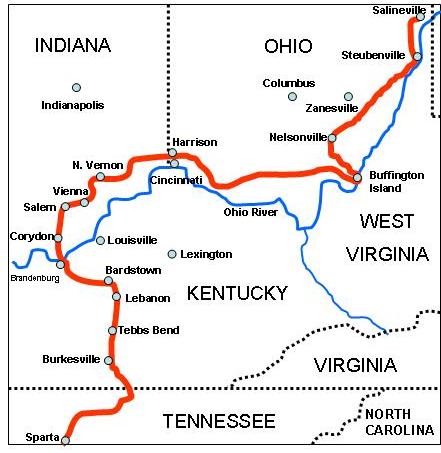
General John Hunt Morgan was a Freemason. In 1846, Morgan became a Mason at Daviess Lodge #22 in Lexington, Kentucky. While pillaging through the town of Jackson, some of his men were said to have ransacked and looted items from Trowel Lodge #132 in Jackson, most notably the Tyler’s sword. Morgan allegedly scolded the men and ordered them to return the stolen paraphernalia back to the Masonic Temple. From here, Morgan went to Vinton in Gallia County, and on to Wilkesville, then making his entrance into Meigs County.
The Union response was not long in coming, as Major General Ambrose Burnside, commanding the Department of the Ohio, ordered out all available troops, as well as sending several Union Navy gunboats steaming up the Ohio River to contest any Confederate attempt to reach Kentucky or West Virginia and safety. Brig. Gen. Edward H. Hobson led several columns of Federal cavalry in pursuit of Morgan’s raiders, which by now had been reduced to some 1,700 men. Ohio Governor David Tod called out the local militia, and volunteers formed companies to protect towns and river crossings throughout the region.
On July 18, Morgan, having split his column earlier, led his reunited force towards Pomeroy, where Morgan intended to cross into West Virginia. Running a gauntlet of small arms fire, Morgan’s men were denied access to the river and to Pomeroy itself by a local militia.
According to Ervin’s Pioneer History of Meigs County,
The local militia in advance of him were beginning to fall trees and tear up bridges to obstruct Morgan’s progress. Near Pomeroy they made a stand. For four or five miles his road ran through a ravine, with occasional intersections from hill roads. At all these crossings he found a local militia posted, and from the hills above him they made his passage through the ravine a perfect running of the gauntlet. On front, flank and rear the militia pressed and closed eagerly upon his track.
It was fortune that two of the Middleport companies of Ohio National Guard – one of infantry commanded by Captain RB Wilson, Lieutenants OP Skinner and Samuel Grant; the other of artillery, Captain John Schreiner, the two numbering about 120 men – to render service so valuable that it should find a place in history. With other organizations these companies were ordered to rendezvous at Marietta.
On the very night of their arrival in camp came tidings of the enemy’s approach to their own town and they at once asked for orders to return to the defense of their homes. With but a little delay they were put aboard a steamer, and by daylight the following morning had disembarked and were several miles out on the roads by which Morgan was approaching.
William Grant, George Womeldorff and James Waddell, three of the most reliable men of the command, “were directed to find a point well up the road from which they could observe the approach and estimate the number of the enemy, and by an agreed signal advised headquarters of the fax ascertains.” The “artillery” consisted of an old gun that had been used for celebrating the Fourth of July, which, loaded with spikes and pieces of chain “commanded” for several hundred yards a straight piece of road flanked on one side by timber where part of [the Meigs County] men were concealed and on the other side by a creek with steep banks. Scarcely had the dispositions been made when the enemy appeared. William Grant and his comrades, assisted by the darkness, avoided the approaching raiders, who, a few moments later, ran up on the picket commanded by Lieutenant Samuel Grant and surrendered without much resistance. They were marched to Pomeroy and placed under guard in the courthouse to be turned over as prisoners of war, 68 enlisted men and seven officers.
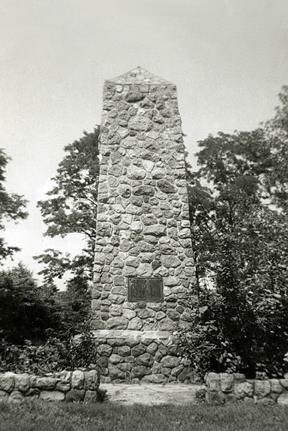
From The History of Meigs and Gallia Counties, published by the Union Publishing Company,
. . . The show of resistance was enough to turn him aside and he moved off of the river towards Buffington Island.
At Chester, he resisted for an hour and a half and hunted for a guide. That stop though so short was fatal for it was 8 o’clock when he had reached the ford, too late and dark to undertake to cross. And he persisted right on after arriving at Chester that to him most precious hour and a half would no doubt have seen him safely on the Virginia side. Tired and worn out, both men and horses, he decided to rest for the night on the north bank of the Ohio. The handful of men who had thrown up works near the riverbank and attempted to impede his progress, might then have been easily brushed aside. But the dawn of another morning brought him more formidable enemy and the person of general Judah with his regulars who had arrived in the night by a boat, fresh and ready for the conflict.
Here is the description of the movements as given by Whitelaw Reid in his Ohio in The War,that refer to the stop at Chester.
But [Morgan’s] evil genius was upon him. He had lost an hour and a half at Chester in the afternoon – the most precious hour and a half since his horse’s feet touched Northern soil: and he now decided to waste the night.
In the hurried counsel with his exhausted officers it was admitted on all hands that Judah had arrived – but some of his troops had probably given force to the skirmishing near Pomeroy – that they would certainly be at Buffington by morning and that gunboats would accompany them. But his men were in bad condition and he feared to trash them in the night attack upon a fortified position which she had not reconnoitered. The fear was fatal.
Even yet, by abandoning his wagon trains and his wounded he might have reached unguarded forwards a little higher up. This too, was mentioned by Morgan‘s officers. He would save all he promptly replied or lose altogether. And so he gave mortgages to fate. By morning Judah was up.
Information reached Captain Wilson that one detachment would undertake to cross the Ohio as a show place several miles above Pomeroy, and reinforced by about 20 men, under Daniel Davis of Pomeroy, he immediately marched up to intercept the fugitive, reaching the point late in the evening.
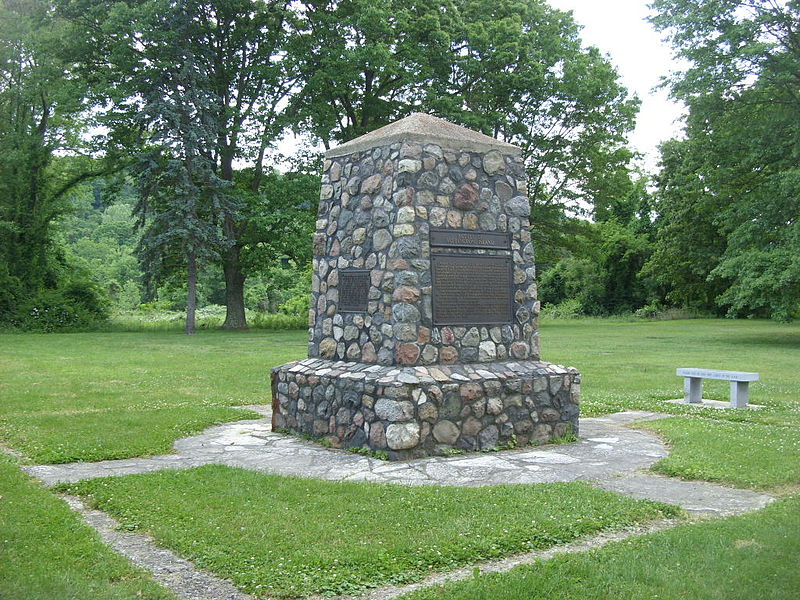
At daybreak Duke advanced with a couple of rebel regiments to storm the earth work, but found it abandoned. He was rapidly proceeding to make dispositions for crossing when Judah’s advance struck him. At first he repulsed it and took a number of prisoners, the adjutant general of Judah’s staff among them. Morgan then ordered him to hold the force on his front and check. He was not able to return to his command untilit had been broken and thrown into fall retreat before and impetuous charge of Judah’s cavalry, headed by Lieutenant O’Neal of Fifth Indiana. He succeeded in rallying thenreforming his line. But now, advancing up the Chester and Pomeroy Road, came the gallant cavalry that over three states had been galloping on their tract – the 3000 of Hobson’s command – who for now two weeks had been only a day, a forenoon, an hour behind them.
As Hobson’s guidons fluttered out in the little valley by the riverbank where they fought, every man of that band that had so long defied 100,000 knew that the contest was over. They were almost out of ammunition, exhausted and scarcely 2000 strong. Against them were Hobson’s 3000 and Judah’s still larger force. To complete the overwhelming odds that, in spite of their efforts, had at last been concentrated upon them, the tin-clad gun boats steamed up an open fire.
Morgan comprehended the situation as readily as a hard riding troopers, who, still clinging to their bolts of calico, we’re already beginning to gallop towards the rear. He at once essayed to extricate his trains and then to withdraw his regiments by column of fours from right of companies, keeping up meanwhile, as sturdy resistance as he might. For some distance the withdrawal was made in tolerable order; then under a charge of a Michigan cavalry regiment, everything was broken, and the retreat became a rout. Morgan with not quite 1200 man escaped. His brother with Colonels Duke, Ward, Huffman and about 700 men were taken prisoner.
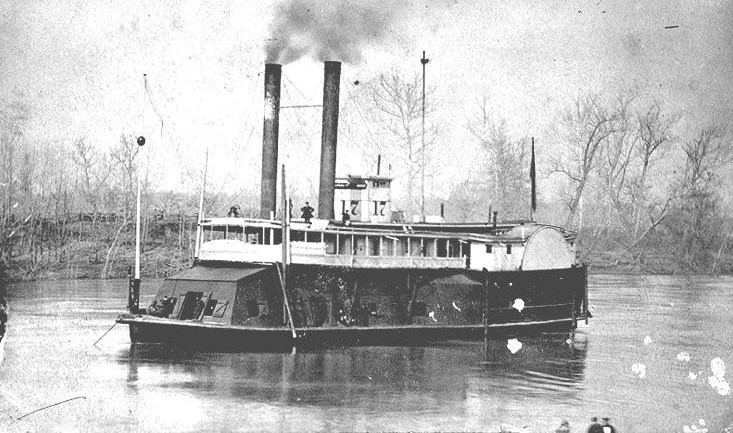
This was the battle of Buffington Island. It was brief and decisive. But for his two grave mistakes of the night before, Morgan might have avoided it and escaped, and many a thrilling tale of the events that happened in the following seven days and nights of the raid would never have been told,… But it cannot be said he yielded to blow that insured his fate without resistance, and the courage and tenacity worthy of a better cause. The superiority in forces was overwhelming and the Union losses small. The boats carried the prisoners back to Cincinnati and the troops, with a little rest, pushed on after Morgan and the 1,200 men who had escaped.
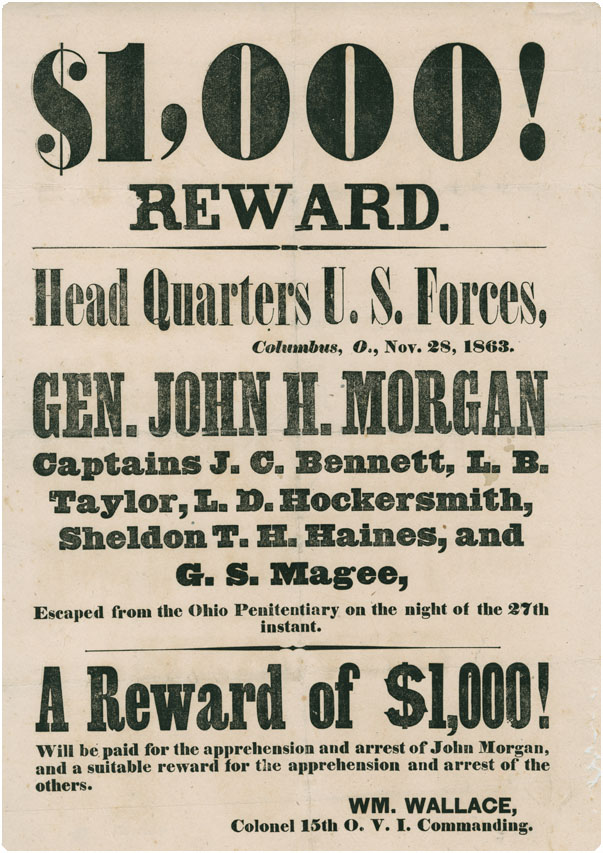
About 15 or 20 miles above Buffington Island he again attempted to cross and succeeded in landing 1/4 of his men on Virginia soil. Morgan himself was in the middle of the Ohio River but the gunboats were to close upon him and he was forced back to the Ohio side with his remaining 900 men. Again, his hurried flight was taken up. Almost insurmountable difficulties surrounded him. His men were exhausted from long, forced marches and enormous work. Their pillaging had greatly demoralized them. The blow of defeat was severe causing a lack of faith in themselves and a loss of confidence in their intrepid commander. They were harassed on every hand. Every loophole of escape shut off; hunted like game, day or night.
Yet to the very last the energy of this during cavalryman worthy of admiration of all – even his enemies. With no apparent possibility of escape at Buffington Island he slipped away from Judah and Hobson with more than half of his forces.
After Belleville, he headed almost west and went far as MacArthur. His course then ran back to Blennerhassett Island, thence through Athens, eastern Hocking and Perry Counties and into Morgan County near Porterville on July 22, 1863. He then continued through Muskingum County, Noble, Guernsey, Carroll, Harrison, Jefferson and Columbiana Counties where he was captured at Salineville, near Steubenville. He was then confined to the Ohio penitentiary several months until his escape November 27, through Cincinnati, Kentucky and Tennessee to Richmond, Virginia. He was killed in 1864 in a skirmish in East Tennessee.
As the old Ohio flows….




